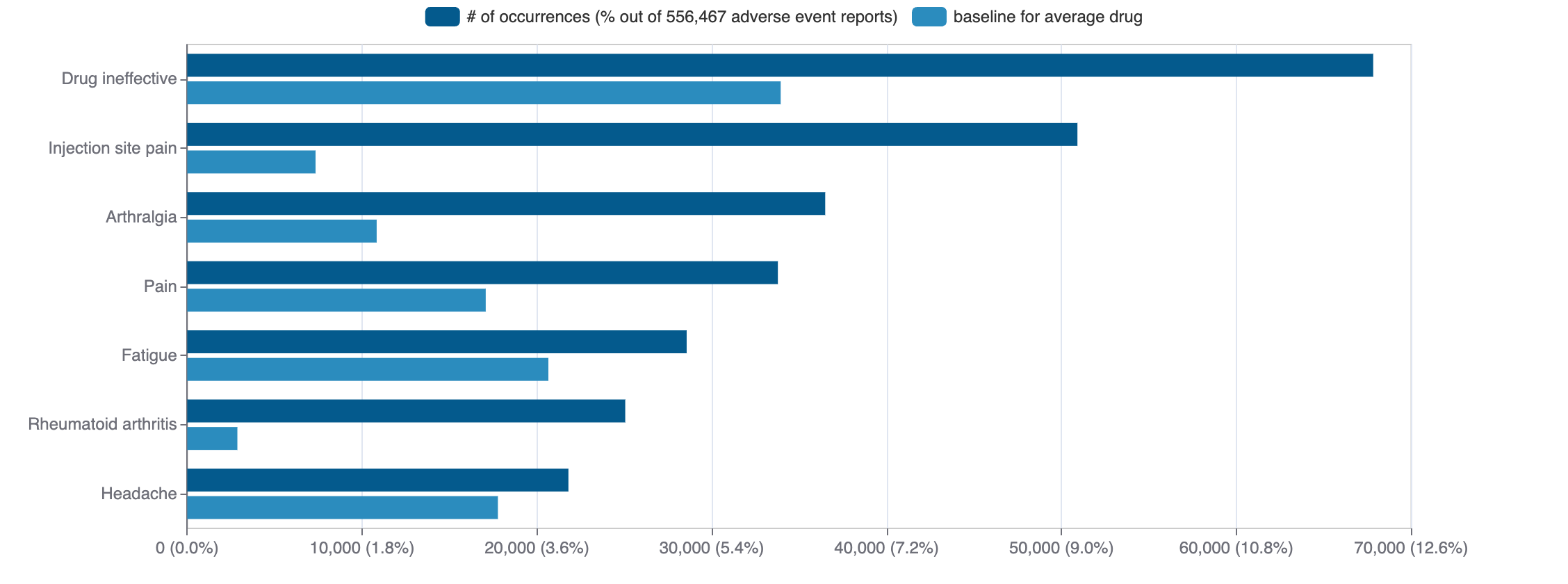Dimercaprol
Bal (dimercaprol) is a small molecule pharmaceutical. Dimercaprol was first approved as Bal on 1982-01-01. It is used to treat arsenic poisoning, lead poisoning, and nervous system mercury poisoning in the USA.
Download report
Favorite
Commercial
Trade Name
FDA
EMA
Bal
Drug Products
FDA
EMA
New Drug Application (NDA)
New Drug Application (NDA)
Abbreviated New Drug Application (ANDA)
Abbreviated New Drug Application (ANDA)
Dimercaprol
Tradename | Company | Number | Date | Products |
|---|---|---|---|---|
| BAL | Akorn | N-005939 RX | 1982-01-01 | 1 products, RLD, RS |
Labels
FDA
EMA
Brand Name | Status | Last Update |
|---|---|---|
| bal | New Drug Application | 2020-10-08 |
Agency Specific
FDA
EMA
No data
Patent Expiration
No data
HCPCS
Code | Description |
|---|---|
| J0470 | Injection, dimercaprol, per 100 mg |
Clinical
Clinical Trials
75 clinical trials
View more details

Mock data
Subscribe for the real data
Subscribe for the real data
Indications Phases 4
Indication | MeSH | Ontology | ICD-10 | Ph 1 | Ph 2 | Ph 3 | Ph 4 | Other | Total |
|---|---|---|---|---|---|---|---|---|---|
| Healthy volunteers/patients | — | 1 | — | — | 1 | 1 | 3 | ||
| Bronchiectasis | D001987 | HP_0002110 | J47 | — | — | — | 1 | — | 1 |
Indications Phases 2
No data
Indications Without Phase
Indication | MeSH | Ontology | ICD-10 | Ph 1 | Ph 2 | Ph 3 | Ph 4 | Other | Total |
|---|---|---|---|---|---|---|---|---|---|
| Ventilator-associated pneumonia | D053717 | EFO_1001865 | J95.851 | — | — | — | — | 6 | 6 |
| Pneumonia | D011014 | EFO_0003106 | J18 | — | — | — | — | 6 | 6 |
| Bronchoalveolar lavage | D018893 | BTO_0000155 | — | — | — | — | 5 | 5 | |
| Sarcoidosis | D012507 | EFO_0000690 | D80-D89 | — | — | — | — | 4 | 4 |
| Chronic obstructive pulmonary disease | D029424 | EFO_0000341 | J44.9 | — | — | — | — | 4 | 4 |
| Bacterial pneumonia | D018410 | EFO_1001272 | J15.9 | — | — | — | — | 3 | 3 |
| Interstitial lung diseases | D017563 | EFO_0004244 | J84.89 | — | — | — | — | 3 | 3 |
| Respiratory tract infections | D012141 | J06.9 | — | — | — | — | 3 | 3 | |
| Non-small-cell lung carcinoma | D002289 | — | — | — | — | 3 | 3 | ||
| Autoimmune diseases | D001327 | EFO_0000540 | M30-M36 | — | — | — | — | 2 | 2 |
Show 33 more
Epidemiology
Epidemiological information for investigational and approved indications
View more details
Drug
General
| Drug common name | DIMERCAPROL |
| INN | dimercaprol |
| Description | Dimercaprol is a dithiol that is propane-1,2-dithiol in which one of the methyl hydrogens is replaced by a hydroxy group. a chelating agent originally developed during World War II as an experimental antidote against the arsenic-based poison gas Lewisite, it has been used clinically since 1949 for the treatment of poisoning by arsenic, mercury and gold. It can also be used for treatment of poisoning by antimony, bismuth and possibly thallium, and (with sodium calcium edetate) in cases of acute leaad poisoning. Administration is by (painful) intramuscular injection of a suspension of dimercaprol in peanut oil, typically every 4 hours for 2-10 days depending on the toxicity. In the past, dimercaprol was also used for the treatment of Wilson's disease, a severely debilitating genetic disorder in which the body tends to retain copper, with resultant liver and brain injury. It has a role as a chelator. It is a dithiol and a primary alcohol. |
| Classification | Small molecule |
| Drug class | — |
| Image (chem structure or protein) | |
| Structure (InChI/SMILES or Protein Sequence) | OCC(S)CS |
Identifiers
| PDB | — |
| CAS-ID | 59-52-9 |
| RxCUI | 3445 |
| ChEMBL ID | CHEMBL1597 |
| ChEBI ID | 64198 |
| PubChem CID | 3080 |
| DrugBank | DB06782 |
| UNII ID | 0CPP32S55X (ChemIDplus, GSRS) |
Target
Agency Approved
No data
Alternate
No data
Variants
Clinical Variant
No data
Financial
No data
Trends
PubMed Central
Top Terms for Disease or Syndrome:

Mock data
Subscribe for the real data
Subscribe for the real data
Additional graphs summarizing 944 documents
View more details
Safety
Black-box Warning
No Black-box warning
Adverse Events
Top Adverse Reactions

Mock data
Subscribe for the real data
Subscribe for the real data
6 adverse events reported
View more details
Premium feature
Learn more about premium features at pharmakb.com
Learn more
